Mediterraneo
Hydra’s storied past, future and present: What we learned from our sit-down with George Koukoudakis
Tell a Greek that your favourite island in their country is Hydra and you’re likely to see a wistful expression on their face. The tiny Aegean island occupies a special place in the Greek imagination: it’s the birthplace of five prime ministers and Pavlos Kountouriotis, the first president of the Second Hellenic Republic, who was elected in 1924. Not only that, storied Hydra amassed a fortune with its powerful merchant naval fleet and played a key role in the Greek War of Independence, which spanned from 1821 until 1829.
Later came writers and other creatives from across the globe, including Henry Miller, the American author of the 1934 novel Tropic of Cancer, and Canadian singer-songwriter Leonard Cohen, who would bring the minuscule island not only international renown but also give it its own modern mythology. Today it’s beloved by the contemporary-art crowd, attracting artists and collectors with its buzzy summer exhibitions, installations and residencies.
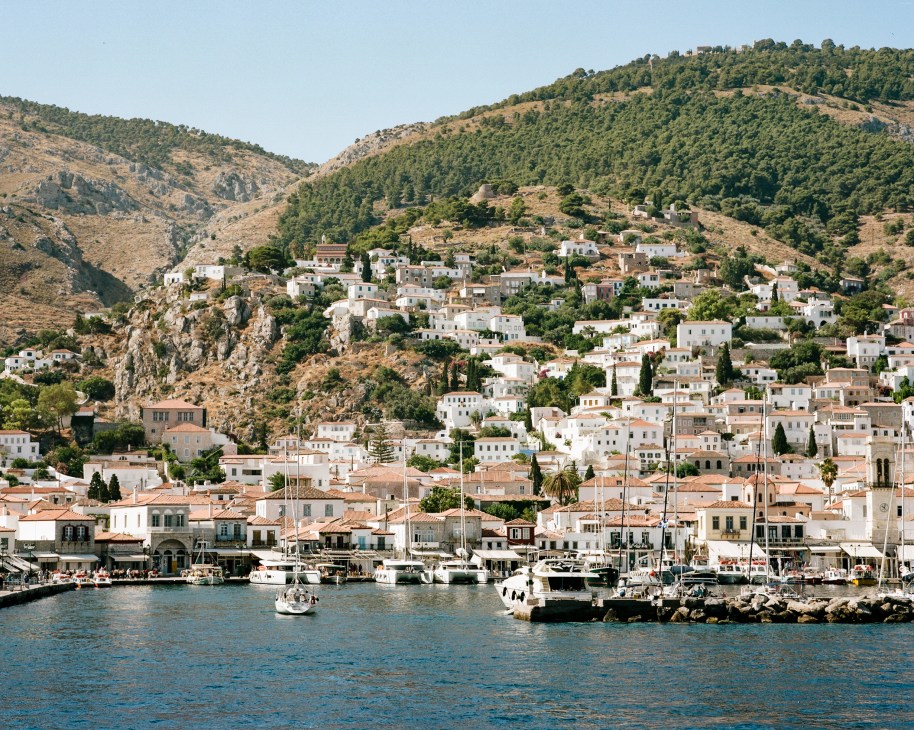
Though less than 70km from Athens, Hydra is a delightful place apart. For one thing, car traffic has long been banned here: visitors and residents alike must walk its steep steps, mountain trails and coastal paths or take a mule and a taxi boat. From the island’s horseshoe-shaped port, its eponymous main town rises like an amphitheatre lined with 18th-century stone mansions and whitewashed villas. Elsewhere, you’ll find charming hamlets surrounded by rugged hillsides dotted with churches and monasteries. The local population is just 2,000. Not much seems to have changed since the days when Miller marvelled at Hydra’s “wild and naked perfection”.
Sitting in his office in the town hall, steps away from where the boats dock, Hydra mayor, George Koukoudakis, points out portraits of the island’s legendary seafarers and independence fighters. He waxes lyrical about the history and identity of his birthplace. Elected for a third term in 2023, Koukoudakis, who is also a professor at the nearby Hellenic Naval Academy, is passionate about preserving all that makes the island special. More than anything, that means mitigating the impact of mass tourism. “We are protected from too much tourism by the fact that we are a car-free island,” he says. Laws also serve as a brake on development. “We are not allowed to build new houses – just renovate existing ones – so our capacity for hosting tourists is limited. This is the reason why we aim to attract a certain type of tourism that is appreciative of what makes Hydra unique.”

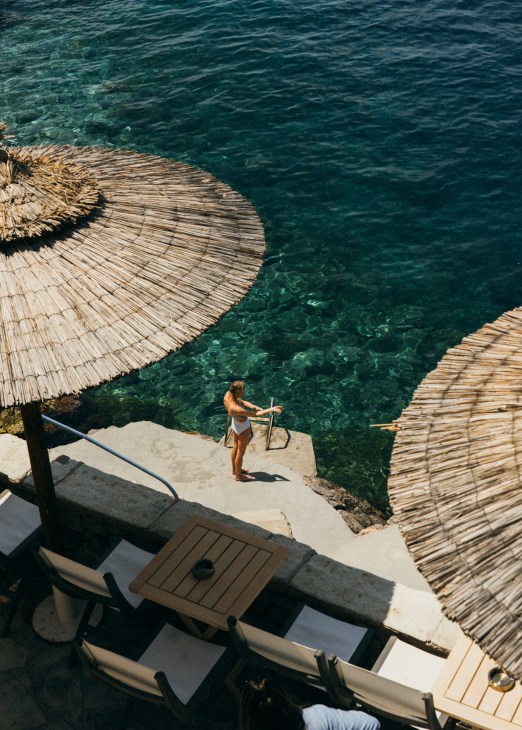
Unlike the party islands of Mykonos or Santorini, Hydra unapologetically moves to its own laid-back rhythm. But even though it has managed to escape more rowdy elements, it faces its own challenges. A desalination system has ensured adequate water supply since 2014 but broader climate-change related issues are a concern. A team at the University of Athens is researching how to protect Hydra from floods, earthquakes and forest fires. Last summer, locals were dismayed when a large swath of the island’s only pine forest was set ablaze by fireworks that had been launched from a superyacht.
“We are fully aware of climate change and the challenges that it presents,” says Koukoudakis, adding that he would like to see more support from the central government in Athens. “We are trying to adapt to these challenges but we are a very small and understaffed municipality.”

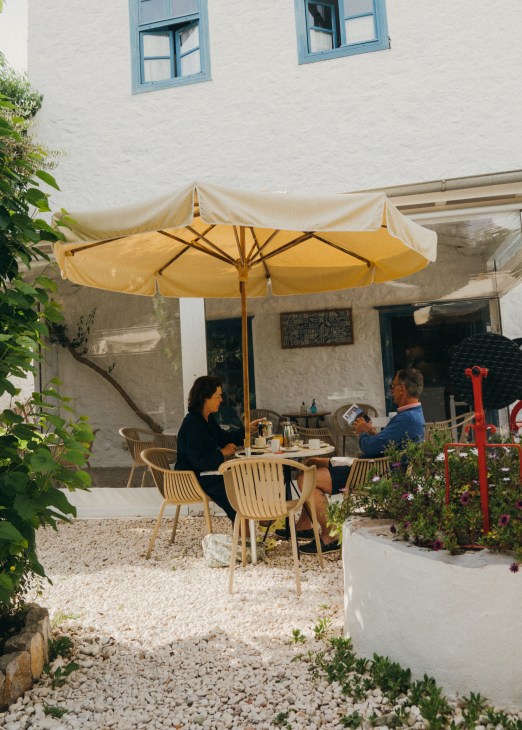

The question of holiday homes and the Airbnb effect is another headache. Many Hydriots complain that teachers, doctors, police officers and other essential workers often cannot find a place to live on the island. “This is a serious challenge,” says the mayor. “We cannot build new homes, so when someone purchases a house but doesn’t really use it or just rents it out to make money on Airbnb or other platforms, that’s a problem. We ask those who come here and buy property with financial investment in mind to be aware of the needs of local society and to protect and respect the specialness of this place.” Koukoudakis laments that only the central government has the power to limit the spread of Airbnb. “If I had that authority here, I would restrict it and raise taxes on it too.”
In the longer term, the mayor wants to see Hydra building on its identity as a cosmopolitan beacon in the world, a place with a rich artistic heritage that continues to lure visitors, be they day-trippers or those who intend to stay longer. “Artists feel the difference of our island,” he says. “I want Hydra to continue to be a destination for creative people.”
Hydra has always revelled in its exceptionalism and what works here might not work so well elsewhere in Greece. However, perhaps other islands trying to overcome modern challenges could learn from this timeless part of the Saronic archipelago where some things never change.
Genoa’s comeback as a hub of vision and renewal
The 14th-century poet Petrarch christened Genoa “La Superba” – the proud city. It’s a nickname that rang true for centuries, as Genoa’s maritime trade and banking dominance earned it wealth, power and a profusion of magnificent palazzos. Wedged between the Ligurian Sea and the Apennine mountains, Genoa is today etched with past splendour but also has a modern grittiness. Years of neglect have left its historic centre a little run down and, while many of its old businesses remain, there’s a pressing need to tempt a new generation of entrepreneurs to set up shop here.
The city is well positioned to reclaim some of that long-dormant pride. A slew of projects, both private and public, is steadily coming to fruition, attracting investment and transplants from Milan and beyond. These new arrivals are attracted by Genoa’s affordable housing stock, breezy coastal charm and faded – yet still impressive – grandeur. “Nobody talks about Genoa,” says Alessandro Mensi, a set designer with a gallery in Milan who now lives in a top-floor flat with sweeping views of the port. “It’s an underground secret. It’s so close to Milan yet completely different.”
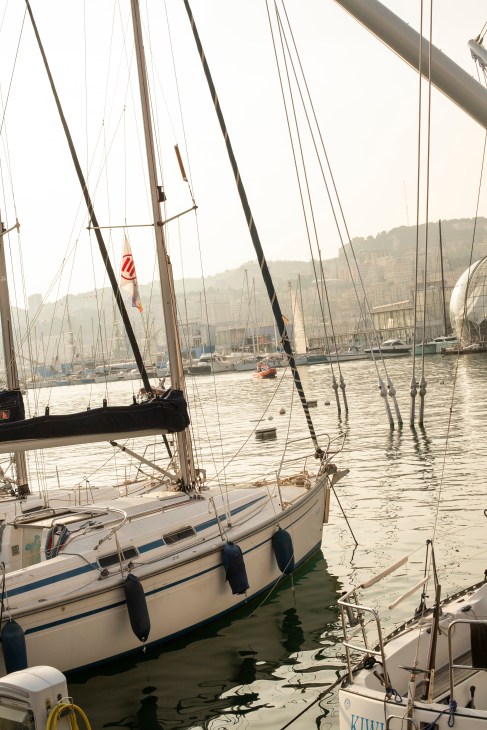
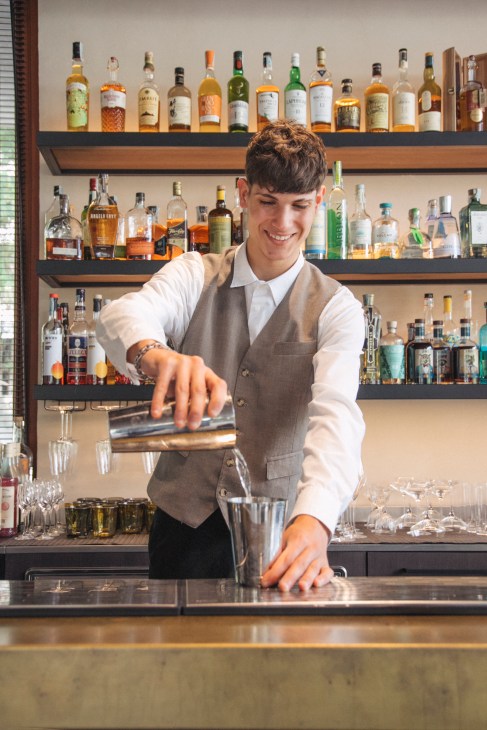
At the heart of the recent public works is a long‑awaited high-speed rail line, scheduled to begin partial service in 2026, which will cut the journey to Milan to less than an hour. When seafaring was the dominant mode of travel, Genoa was among the country’s principal hubs; however, because of the mountainous terrain, the city was left off Italy’s high-speed rail map. The airport too is remarkably underserved. The new fast rail links have been 30 years in the making. They will at last put Italy’s industrial heartland within a reasonable commute.
“The housing is remarkably high quality in Genoa but prices are low,” says Lorenzo Bagnara, pulling out his phone to show Monocle a 235 sq m art nouveau flat listed for €235,000. “There’s a big gap between the cost of commercial and residential spaces, and what they’re worth.” Bagnara runs Via Garibaldi 12, a vast, family-owned shop that brings together contemporary and classic design in the wonderfully Genoese setting of a 16th-century palazzo, where frescoes and gilded mouldings serve as the backdrop to Richard Ginori tableware and Vitra lamps. “Genoa has maintained its authenticity,” he says.
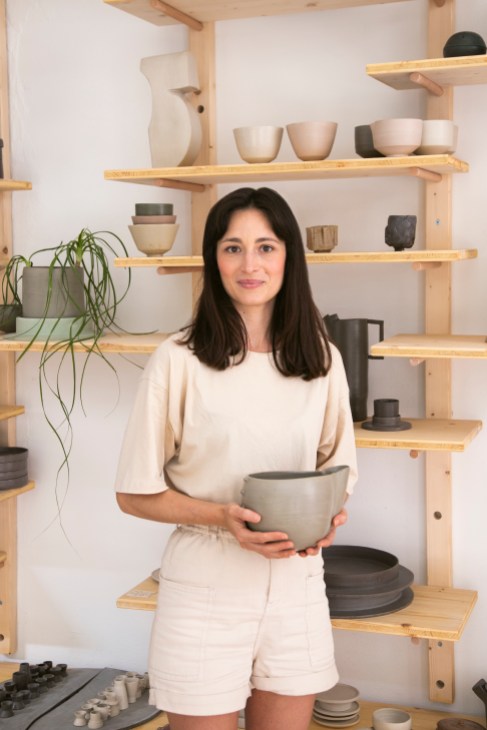
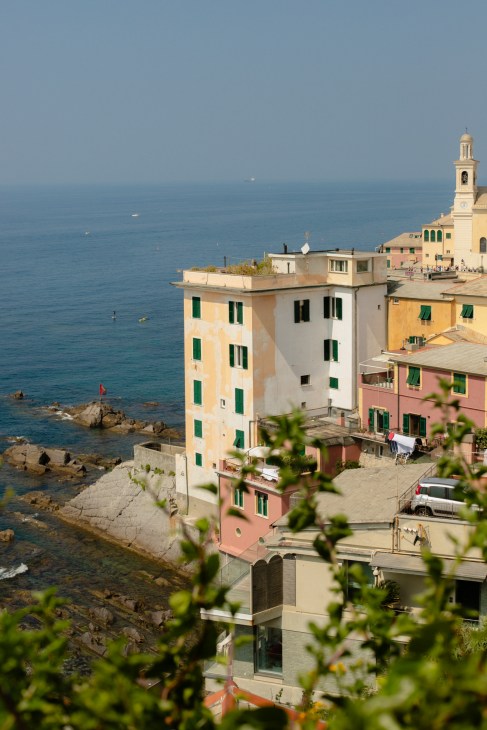
Storied businesses still thrive, such as Finollo, founded in 1899, which was Fiat tycoon Gianni Agnelli’s favourite shirtmaker, and the Confetteria Pietro Romanengo fu Stefano, which first opened its doors in 1780. The latter launched a new lunch room, La Corte, in June, featuring original wood-panelled interiors from 1814. “We still need more quality hotels to cater for the kinds of travellers who would bring a meaningful economic boost to the city,” says Bagnara. “Anyone with experience abroad would see opportunity here. It’s still virgin territory, a great place to invest with little competition.”
As seasoned travellers steer clear of the hordes overwhelming Florence, Rome and Venice, Genoa’s comparatively modest tourism industry is growing – even as many residents worry that their city could eventually feel the same pressures from overtourism. It is becoming a base to explore destinations in Liguria, such as Portofino and Cinque Terre. While there’s no shortage of drab budget hotels, modest B&Bs and Airbnbs in Genoa, there’s a gap in the market for higher-end options.
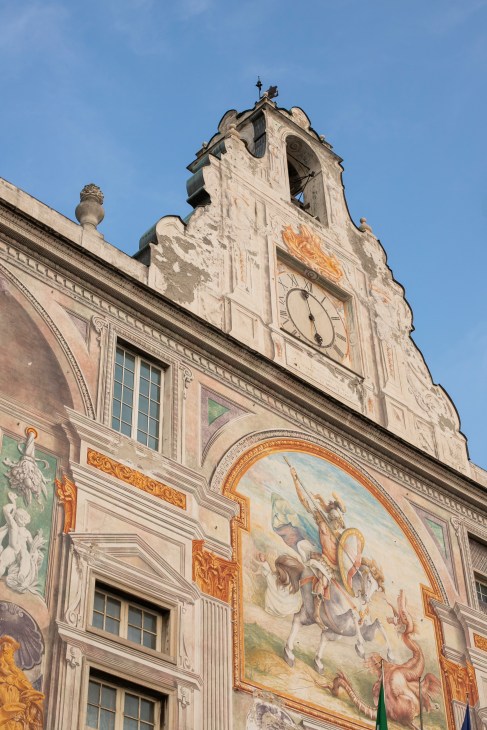

“This city is a precious gem buried beneath sand,” says Emanuela Brignone Cattaneo, a French architect who helped to design the Palazzo Durazzo hotel in the heart of the port district, which opened in 2023. Replete with frescoes and extravagant gold-leaf trim, the Palazzo Durazzo dates back to 1624 and was painstakingly resurrected over a period of seven years. It was a labour of love for Cattaneo, whose husband is a descendant of the family that originally built the structure. This is one of about 100 Palazzi dei Rolli found across Genoa – opulent residences once used by aristocratic families to host visiting dignitaries. “We know how to impress visitors here,” says Cattaneo.
The centrally located Palazzo Durazzo sits behind a warren of narrow streets – caruggi in the Genoese dialect – in one of the city’s most evocative but also shadiest neighbourhoods. The city is now hoping to breathe fresh life into this area, albeit without handing it over to tourists. An ongoing €137m initiative, Progetto Caruggi, was launched in 2020 to attract artists and artisans to the area. Martina Geroni, a ceramicist from Lodi who collaborates with major design brands such as Molteni and B&B Italia, relocated with her partner to open their grès pottery studio in a light-filled shopfront. “The grants are reanimating the city centre, attracting a new generation [of creatives] where there were once lots of dead spaces,” says Geroni, standing before shelves of soft-toned ceramics.
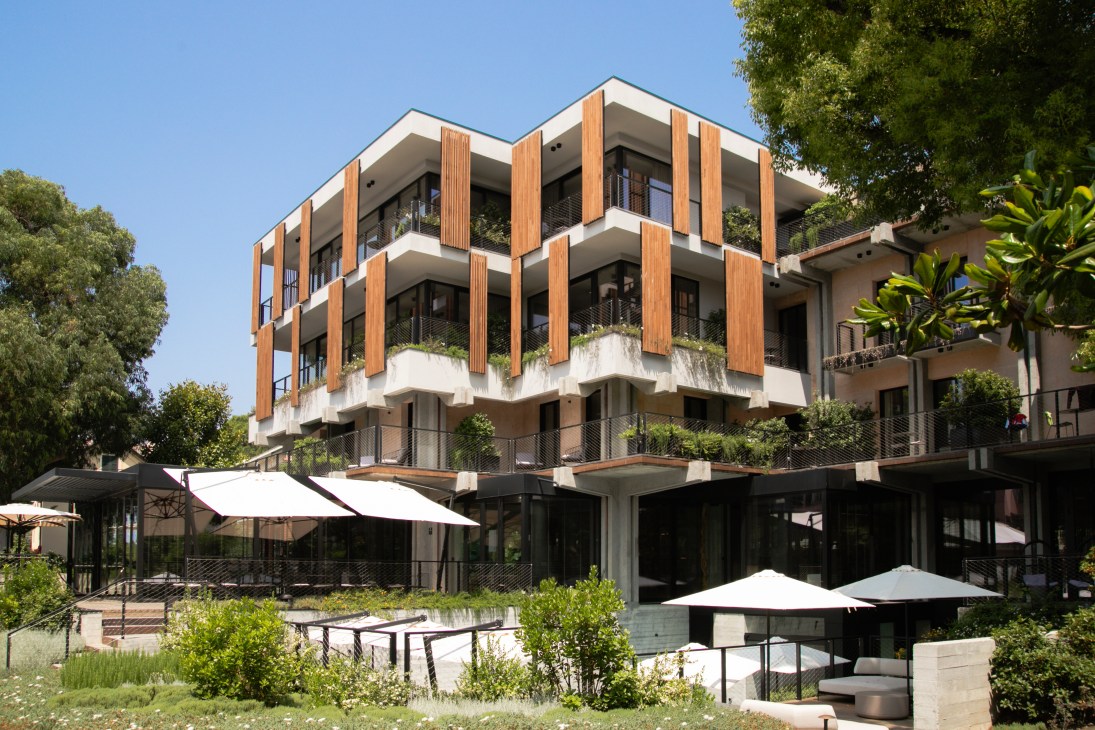
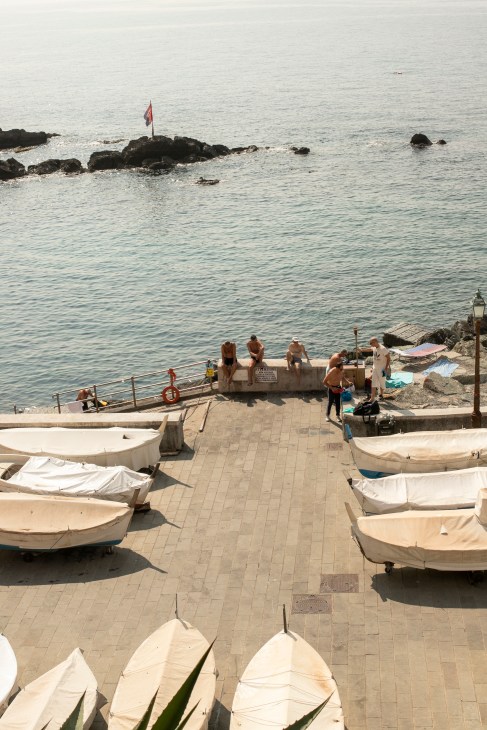
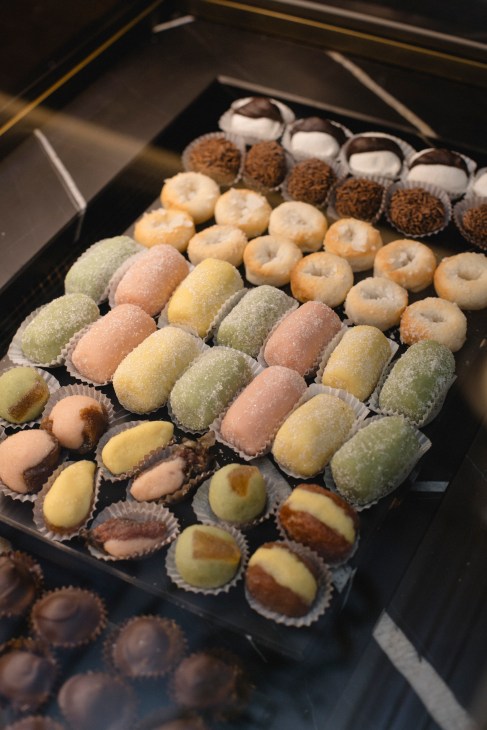
Today the old port is a lively area that’s full of restaurants and yacht pontoons where Coast Guard sailors in white uniforms mill among strolling couples. In 1992, Genoa redeveloped the waterfront with help from architect Renzo Piano, a homegrown hero who opened the highway underpasses that had long cut residents off from the sea. The rumbling highway overhead and the six-lane artery below currently bring noise and pollution to the area. But a €1bn infrastructure project is under way to replace the upper road with a tunnel under the marina, which would allow the highway to be torn down or transformed into a Highline-style green corridor.
“This city was once the tiger of the Mediterranean,” says Teresa Raggi, managing director and board member of Friends of Genoa. “We know how much potential it has.” Her foundation brings together institutions and Genoese business leaders to help reposition the city for the future. The group’s efforts include restoring monuments, staging cultural events and attracting investment for projects such as a new student campus. According to long-term residents, Genoa’s revival shifted up a gear after its biggest modern tragedy: the 2018 collapse of the Morandi Bridge, which killed 43 people and laid bare the decline of this once-proud maritime powerhouse. City leaders have since enacted sweeping physical and social infrastructure programmes. In May former Olympic hammer thrower Silvia Salis was elected as mayor with the promise of an open dialogue with citizens as the city develops – and with a mandate to continue these popular initiatives.

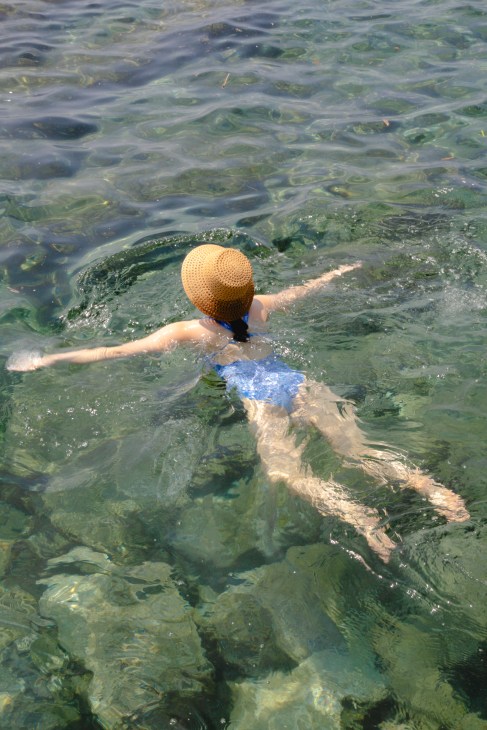
Etra restaurant, which opened in 2023, is a venture by a pair of art dealers who closed their gallery in Brussels and moved to Genoa in order to launch their first hospitality project. Co-founder Iacopo Briano says that the city is “taking off with more life, more movement and more investment”. The black-walled space is hung with works by Damien Hirst and Lucio Fontana, and feels like a sign of a new discerning crowd rolling into town. Their next project is a vast, multilevel space with a stage for music and comedy – “a place to bring people together”, says Briano. It is in the running for a new set of grants, Progetto zac, a €2.5m project to encourage small businesses to set up downtown; the city contributes as much as €120,000 per enterprise for costs including rents and salaries. “The bridge collapse made everyone want to change how things were done here,” he adds. “And there’s money available to make it happen.”
Beyond Genoa’s lively centre, the city’s outskirts move at a different pace. Boccadasse and Nervi, formerly independent fishing villages, retain the lolling, verdant charm of their humble past; maritime pines and palm trees line the streets. Yet the area’s beach clubs, such as the popular Bagni Medusa, perched on a rocky outcrop above crystalline waters, are seeing an uptick in visitors as Genoa’s new arrivals decamp for the weekend.
In Nervi, the Capitolo Riviera hotel opened last year, updating a modernist structure with interiors of cool grey clay, natural wood, artful CC-Tapis rugs on floors and walls, and a flourishing garden. Conceived with plenty of attention to detail in terms of aesthetics but also sustainability, the hotel stands as a forerunner of what Genoa could eventually become. With Milan soon to be just a short train ride away, this city’s seaside beauty, vintage majesty and unique spirit are poised for a wider rediscovery. Its future is in the hands of those who are seeking to celebrate the past while shaping what comes next.
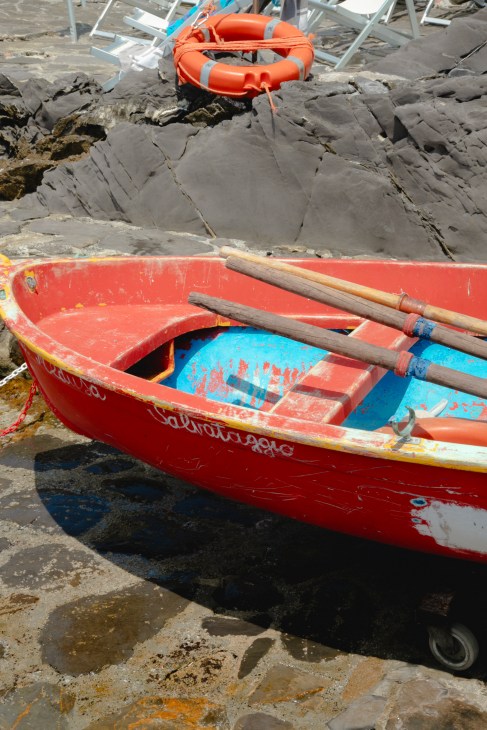
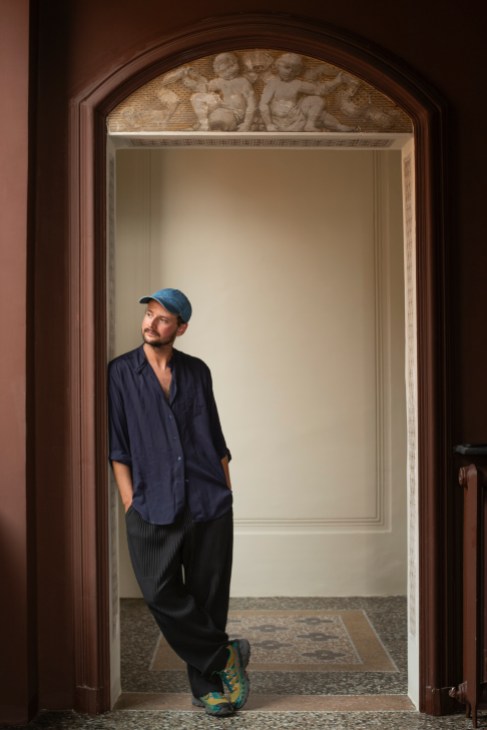
Forum Marbella, the luxury shopping destination redefining the resort region’s lifestyle experience
Marbella’s Golden Mile, an avenue stretching along the Costa del Sol, is home to some of Spain’s most opulent properties. Here, you’ll find spacious villas dotted among five-star hotels, designer shops and a constellation of Michelin-starred restaurants. But the Brendmoes, the Norwegian family behind the Antima Group, felt something was missing. “Marbella’s lifestyle is largely night-themed: restaurants, clubs and bars,” says Sivert Brendmoe, the youngest of three siblings driving the property developer’s latest project. “It lacked an offering for families and those seeking daytime activities. We wanted to create a place for people of all ages.”

With his brother Sander and sister Synne, Sivert opened Forum Marbella, a three-storey shopping development between Marbella’s Old Town and Puerto Banús. Among its tenants are five restaurants, a Swedish bakery, an eyewear retailer and a Danish skincare brand; a Pilates studio opened this summer. “It’s not the biggest mall so we had to be selective,” says Synne. “We didn’t want it to just offer food and drink – we envisioned it as an all-around destination that would appeal no matter what you’re interested in.”
At the heart of the space is an Andalusian-style courtyard with bistro tables set around a stone fountain, where customers can sit for a morning coffee or a quick lunch. One recent afternoon, Spanish, English and Swedish conversations were discernible amid the chatter. “Half of our customers are Scandinavians and many come here for a fika – a coffee and something sweet,” says Ella, who works at Swedish bakery Nybakat. Next door, delicatessen Baccara offers European food items that are hard to find in Spain, as well as fresh Spanish produce.
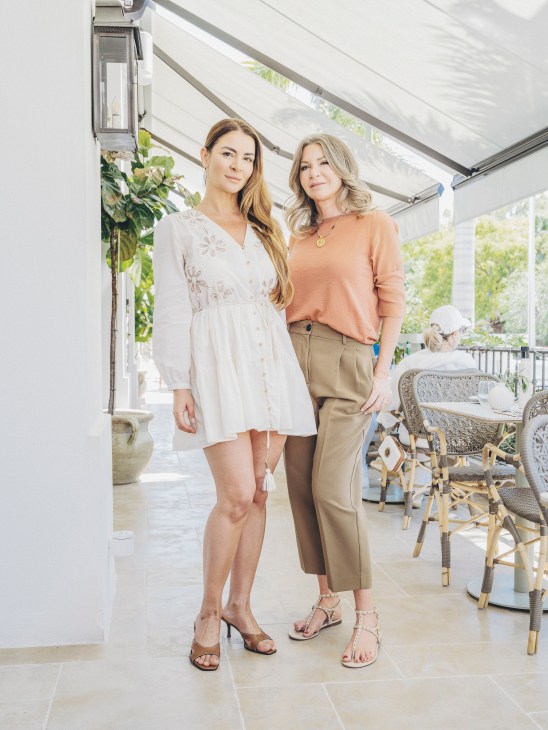


Over the years, the Brendmoes have seen Marbella evolve from a holiday destination into a place where more people are choosing to put down roots. “We have noticed this with the residential properties that we sell,” Sivert says. “Before, people came looking for a second or third holiday home. Now we’re seeing those who want to work remotely and are seeking a primary residence.”
Aside from shopping and F&B, Forum Marbella houses the Antima Group’s headquarters and the flagship for Sandon, its interior-design service. The shop showcases everything from cotton armchairs and mohair blankets to hand-painted ceramics from Granada. As Sandon’s creative director, Synne gave Forum Marbella’s interiors a “Spandinavian” touch. “We wanted to respect the Andalusian feel, both in the architecture and the building’s original design features,” she says. Lampshades were found in Paris, the tiles come from Seville and doors were sourced from nearby Ronda.
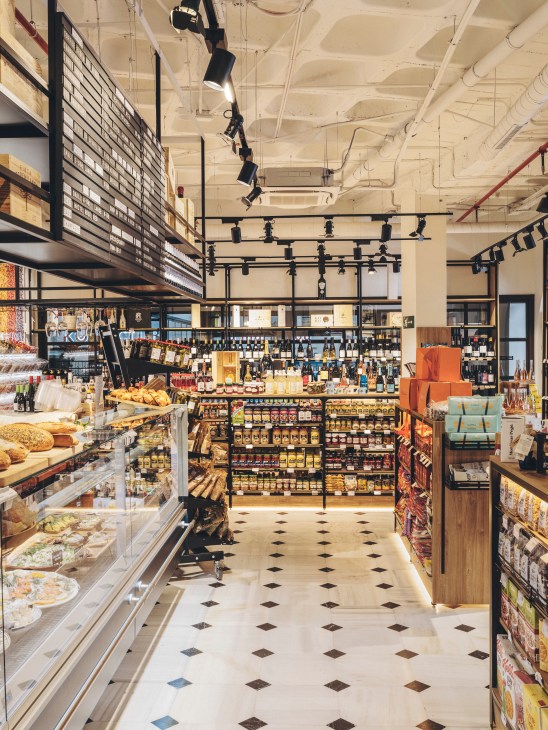
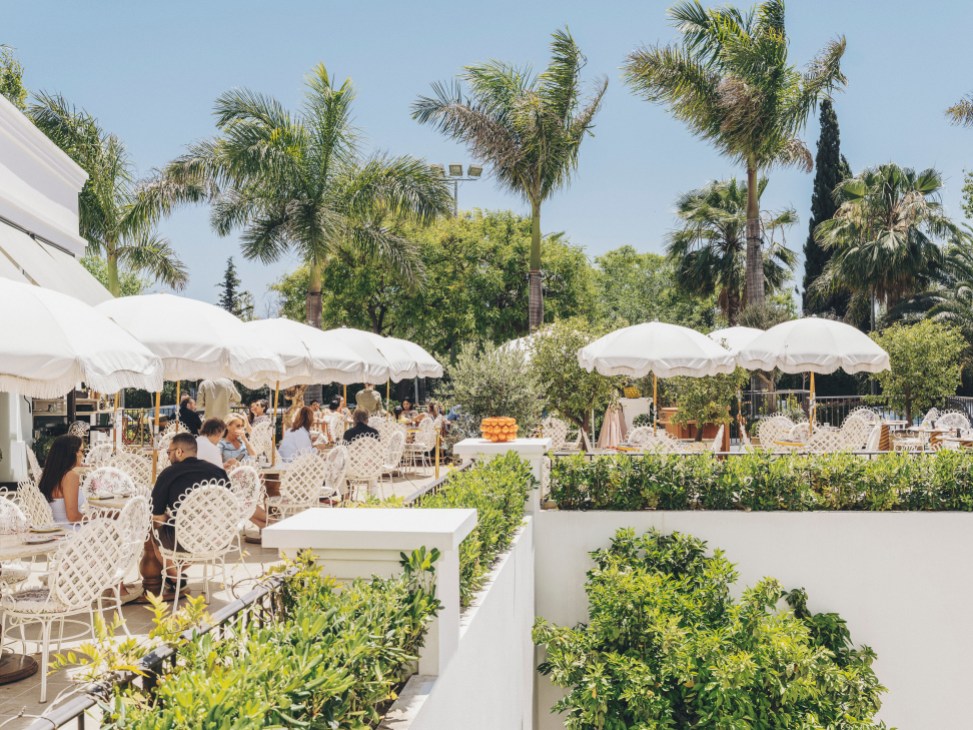
Above all, says Sivert, Forum Marbella is a place where residents can feel at home, whatever their nationality. “We wanted it to feel as if it had always been part of Marbella.”
forum.es
What to savour at Forum Marbella
Planta Bistrot
Founded by Samantha Penfold and Gerda Jerjomin, Planta is an all-day spot where wholesome brunches meet vibrant cocktails. Downstairs, a deli sells organic food. It also hosts private dinners and cooking classes.
Plaza floor
Beast
From sushi rolls to spicy Thai soups and beef tartare, Beast delivers bold flavours in an elegant setting. The terrace on the fountain floor is the place to go if you’re hankering after an alfresco meal.
Fountain floor
Organic Cold-Pressed Juicery
A post-workout crowd lines up here every day for juices, açaí bowls and plant-powered protein shakes. With a Pilates studio just opened at Forum Marbella this summer, this juicery is sure to stay at the heart of the scene.
Plaza floor
Charly Cook
Former El Bulli and Noma chef Charly Cook crafts rolled ice cream using the best seasonal produce. Iced cocktails are also on the menu, as are dog-friendly scoops that have proven surprisingly popular.
Fountain floor
Kofficlub
One of Marbella’s few speciality roasters, Kofficlub was inspired by a passion for coffee shared by a father and his two daughters. Their first permanent outpost (they originally ran the business from a tuktuk) is a corner window next to Nybakat bakery.
Fountain floor
Long neglected on dusty shelves in Corsican bars, Cap Corse is now looking to make an international comeback
In Jacques Deray’s 1974 film Borsalino & Cie, Alain Delon, the epitome of French cool in his hat and double-breasted suit, takes revenge on his enemies in glamorous locales, where dapper card sharks enjoy generous pours of ruby-red Cap Corse. After decades confined to the dusty shelves of old-fashioned bars on Napoleon’s native island, this Corsican liqueur is spritzing its way back to prominence.
Cap Corse, which comes in white and red variants, is a wine-based drink infused with tree bark, citrus fruit and herbs. LN Mattei, the company that distils it, was founded in the early 1870s. The tipple reached the peak of its popularity during the early 20th century. In the decades after the Second World War, however, it steadily lost its lustre, becoming a drink that mostly appealed to older Corsicans who remembered its glory days.

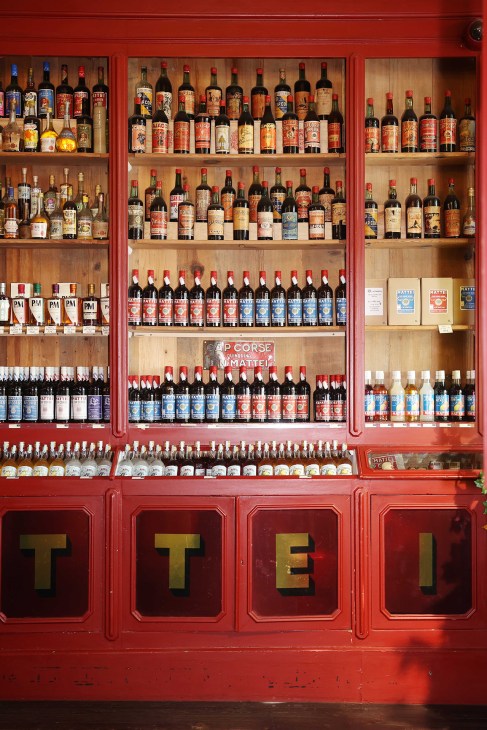
In 2016, Corsica’s Groupe Boisson Corse acquired LN Mattei and kick-started a new era of expansion. It has gone from producing 80,000 bottles, sold almost exclusively in Corsica, to making 400,000 bottles today, 15 per cent of which are exported.
“Over time, Cap Corse had evolved to emphasise the bitterness of cinchona bark,” says Patrice Gontier Ackermann, LN Mattei’s general manager. “To appeal to a broader audience, we revived the original recipe of our founder, Louis Napoléon Mattei, which balances sweetness and bitterness.” This change was informed by the tastes of the current golden age of mixology but also by the rise of the Aperol spritz, which, in less than a decade, has gone from a Venetian aperitivo to a global phenomenon. (Aperol is now the most valuable brand in the Campari group’s European portfolio.) “We recognised that offering a quirky Corsican alternative had significant potential,” says Gontier Ackermann.
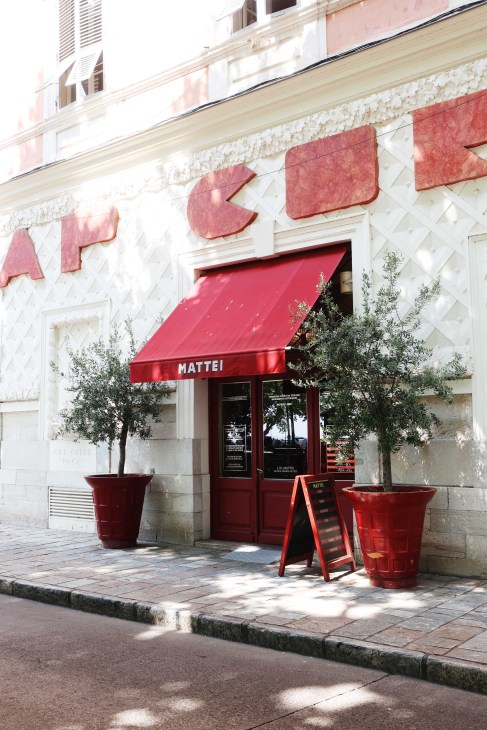

The “Capo Spritz” is now served in bars across the island in large LN Mattei-branded glasses that will look familiar to Aperol fans. Expect to see these gracing a Mediterranean bar this summer. With just 350,000 or so permanent residents in Corsica and near-universal brand recognition on the island, LN Mattei needs to lean hard on exports for future growth. By 2030 it plans to double production to 800,000 bottles, with half sold outside Corsica.
Cap Corse’s resurgence mirrors the island’s rise as a destination, increasingly attracting tourists from beyond France. The number of foreign visitors was up by 6 per cent last year, hitting an all-time high. LN Mattei’s shop in Bastia’s Place Saint Nicolas is an especially strong asset. Established by the company’s founder in 1872, it’s an officially recognised historical landmark. The shop, known for its dark-red open cabinets and exposed stone walls, stocks a wide array of Corsican products alongside the booze.
An alcohol-free version of the apéritif is currently in the works. “That could become an important market for us in the years to come,” says Gontier Ackermann. After long being overlooked, Cap Corse is seeking to shake things up. “If we don’t keep moving, we could disappear.”
Beirut’s beach clubs are back and buzzing with optimism
On a Saturday afternoon in June, the soundtrack at the newly opened Katia beach club in Monsef, north of Beirut, is mellow. Sunshades flutter, cocktails sweat in the sun and the sea sparkles. All of this would be unremarkable around much of the Mediterranean but it wasn’t long ago that Lebanon was staring into an abyss of instability. Katia’s founder, Nabil Massoud, surveys the scene from the edge of the terrace. “We’ve been fully booked since we opened,” he says, sounding somewhat surprised. “People want to feel normal again – to enjoy the sea, music, family and life.”
For Lebanon’s beach clubs, the past few years have been far from normal. An economic collapse in 2019 caused the lira to lose more than 90 per cent of its value by 2023. Then came the coronavirus pandemic, shuttering hotels and pushing beloved restaurants to the edge of ruin. In 2020 the Beirut port explosion turned crisis into catastrophe. When venues tried to reopen in 2023, regional war made the coastline feel like a front line.

“After the explosion, 80 per cent of the industry collapsed,” says Kinda Mourani, the managing partner of Orchid, which operates several of the country’s best-known beach clubs. “People were scared to stay in Lebanon.” Her team at Orchid found itself in a near-constant state of flux. “One moment you’d be planning a party; the next you were cancelling it because of another crisis. Instability kills momentum.”
But something has changed this summer and sunseekers are hitting Lebanon’s beaches in droves. Despite the disruption of flights to Beirut in the wake of the Israel-Iran conflict, Gulf tourists are returning and bookings at coastal hotels are up. Meanwhile, the Lebanese diaspora is coming home for the summer, keen to reconnect. Lebanon has a government in place for the first time in years and the fighting that roiled Beirut in 2023 is largely over. In seaside towns such as Batroun, there’s talk not just of reopening but of reinvention.
“There’s a wave of cautious hope,” says Charbel Mhanna, the CEO of Dubai’s Blackspoon group. “Hotels are full and investment is coming back. People are rebuilding.” In 2024, Mhanna opened the Batroun outpost of his beach restaurant Ibn Al Bahr but shuttered it months later after Israel and Lebanon-based paramilitary group Hezbollah went to war. “People were dying a few kilometres away,” he says. “It didn’t feel right to be serving seafood and playing music. Even after we closed, people kept asking when we’d return. That connection is what brought us back.”
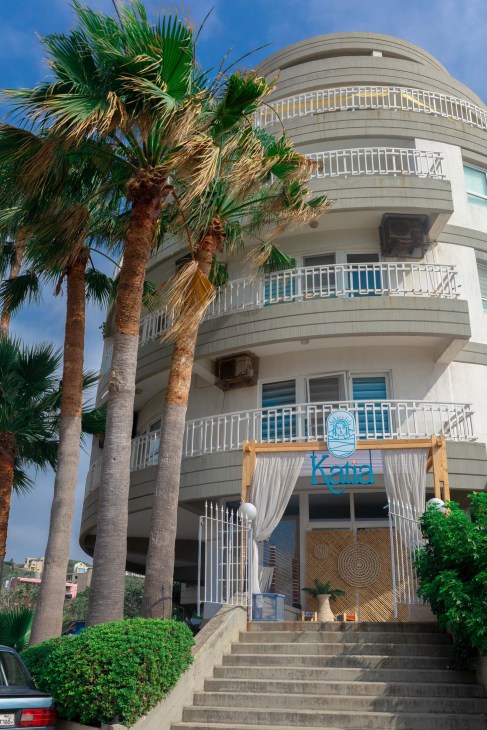

The restaurant’s reopening in May was met with a full house on the first weekend. “It’s emotional for me,” he says. “This isn’t a business that you can approach with a five-year plan. You have to live it day by day. Lebanon has taught us how to operate in chaos.” The challenge, he says, is to build something resilient in a market that often feels anything but. “There’s no currency stability, no clear policy. But there is a spirit. Lebanese people don’t just bounce back – they sprint.”
DJ and entrepreneur Nazir Bassit owns several venues and is preparing to launch a new beach club. “After coronavirus and the economic crash, the big clubs died,” he says. “People moved to speakeasies, small bars, underground stuff. But there’s a boom again. The demand is huge. As a DJ, I’m fully booked all summer.”
Bassit is aware of how fragile hope can be. “When we get close to normality, we’re often knocked back,” he says. In the past, summers of revival have given way to autumns of uncertainty. “But this season, the energy feels more real,” he says. Indeed, there’s a new depth of investment – both financial and emotional. Entrepreneurs seem to be aiming not for quick wins but for permanence. “The beach club scene is now less about flash and more about feeling,” says Mourani. “It’s about creating a space where people feel safe and proud to be here.” In Monsef, Massoud tells Monocle what he hopes to achieve with Katia. “This isn’t just about business,” he says. “It’s about restoring a way of life and showing the world that Lebanon is still here.”
Tide shift in Bahrain
Across the Arabian Peninsula, a wave of investment is reimagining Bahrain’s coastline. As part of the kingdom’s economic recovery plan, launched in 2021, tourism and lifestyle infrastructure is being pushed to the fore. The flagship development is Bilaj Al Jazayer, a 3km public beach on the southwestern coast. Next year, the area will welcome Azure Beach Bahrain, a beach club developed by Edamah, Bahrain’s sovereign property arm, in partnership with Dubai’s Sunset Hospitality Group. Elsewhere, Marassi Galleria near Diyar Al Muharraq promises a blend of hospitality, retail and dining.
Bahrain isn’t known for its beach scene and has long had a somewhat subdued reputation, especially compared to the uae or Qatar. But this might be a turning point. There remain challenges – from a fragmented coastline to high summer humidity – but the island kingdom’s new beach clubs could offer something that the region often lacks: elegance without excess. It’s a gentle revival but a timely one.
Solo Sculpture Trail: Where nature and tradition meet utopian ideals and untrammelled imagination
Feathering the brakes of his tractor, a farmer pauses to admire a colourful monolith rising up from an adjoining meadow. A little more than a decade ago, this peaceful valley was an almost forgotten corner of Aragon, an inland region between Catalonia and Valencia, which is one of Spain’s most sparsely populated provinces. Gallerists Christian Bourdais and Eva Albarrán arrived in 2012, bringing with them a far‑reaching vision and a steady flow of international architects and artists in their wake. With new colours and shapes springing up from the fields and forests, the surrounding area has taken a turn towards a very different future.

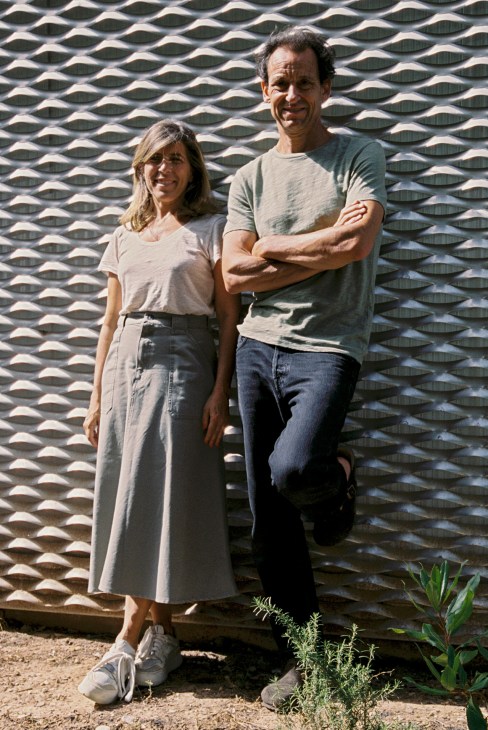
“We moved very slowly,” says Bourdais. He is sitting on the terrace of one of two Solo Houses, which perch on the ridgeline that overlooks his wider estate (to date, this includes more than 200 hectares). “At first, I was rather impatient,” he says, referring to the countryside’s relaxed rhythm. “Thankfully, our slow pace meant that we didn’t make major mistakes. Sometimes, when you go too fast, you lose your way.”
The measured work eventually resulted in two visionary residences. The first, by Chilean architect Pezo von Ellrichshausen, resembles an inverted cube, its private interior patio and pool allowing the exterior to soak in the panoramic foliage. The other house has a circular design and was built by Belgium’s KGDVS studio. Bourdais describes both as legacy homes rather than property developments – edifices that contribute to the global oeuvre of architecture by helping to reinvent the way we live. “It’s a little bit utopian,” he says. “But we are creating an ecosystem of excellence. This takes time.”
The heart of the project is a 3km‑long sculpture trail that is accessible from the nearby highway. The trail, which opened to the public in June, winds its way between 20 large-scale works by a roster of international artists who are represented by the Albarrán Bourdais gallery (which also has commercial spaces in Madrid and Menorca).
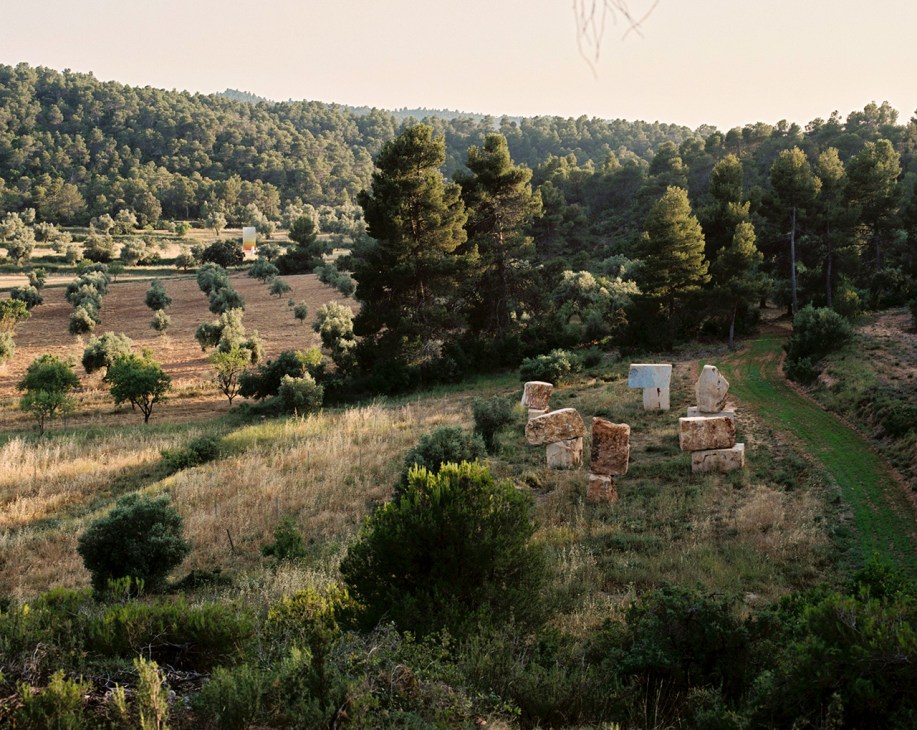
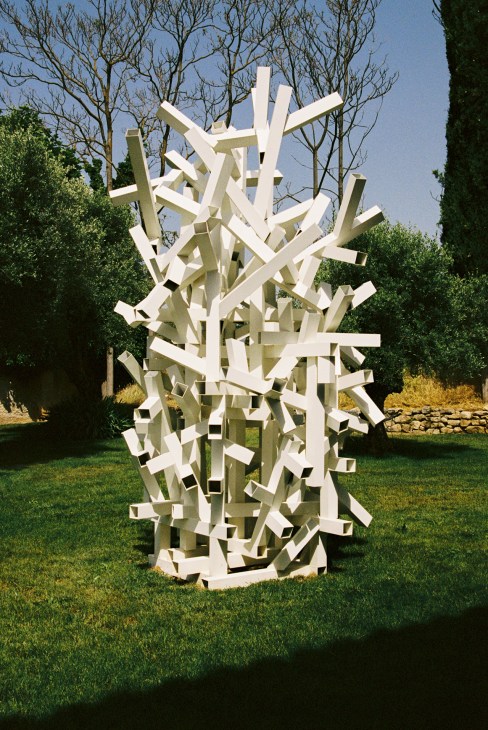
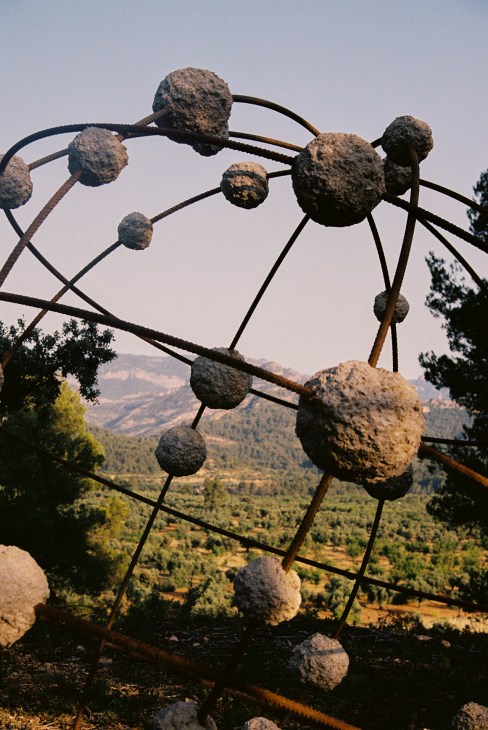
Crossing a stone bridge by Colombian artist Iván Argote, visitors discover a series of engraved miniature poems that point to the perils of polarisation and the urgency of reconciliation. They are an early indication that this sculpture park isn’t merely an exercise in spectacle. Bold statements about climate change are combined with the recurring theme of contemplation (several sculptures have invitations to sit) and there is a sense of playfulness and scale that isn’t always possible inside the white walls of a gallery.
Our guide, project director Julia Cajaraville, shows us “Orbital”, a metallic sphere that holds a constellation of concrete fragments, made by Lebanese artist Mona Hatoum. “It’s a timely piece about the globe’s constant, precarious state of creation and destruction,” says Cajaraville. “We collaborated with metalworkers from the neighbouring village to bring it to life. Many of the community’s artisans get excited when Christian turns up at their doors with an artist. They love the creative challenge.”
With no other major cultural institutions in the vicinity, there has been a concerted effort to invite school groups and other organisations – along with residents of the region – for an inspiring stroll here. An earlier iteration of the trail, which was inaugurated in 2019, linked the two houses but eventually became a sore point for rental guests, who complained about a lack of privacy. The next stage of the development was prompted when neighbours revealed that they wanted to let go of their 40-year‑old winery. Bourdais and Albarrán acquired it and then converted the vineyards and the centuries-old coach house into what became the foundation for a new open-air gallery.
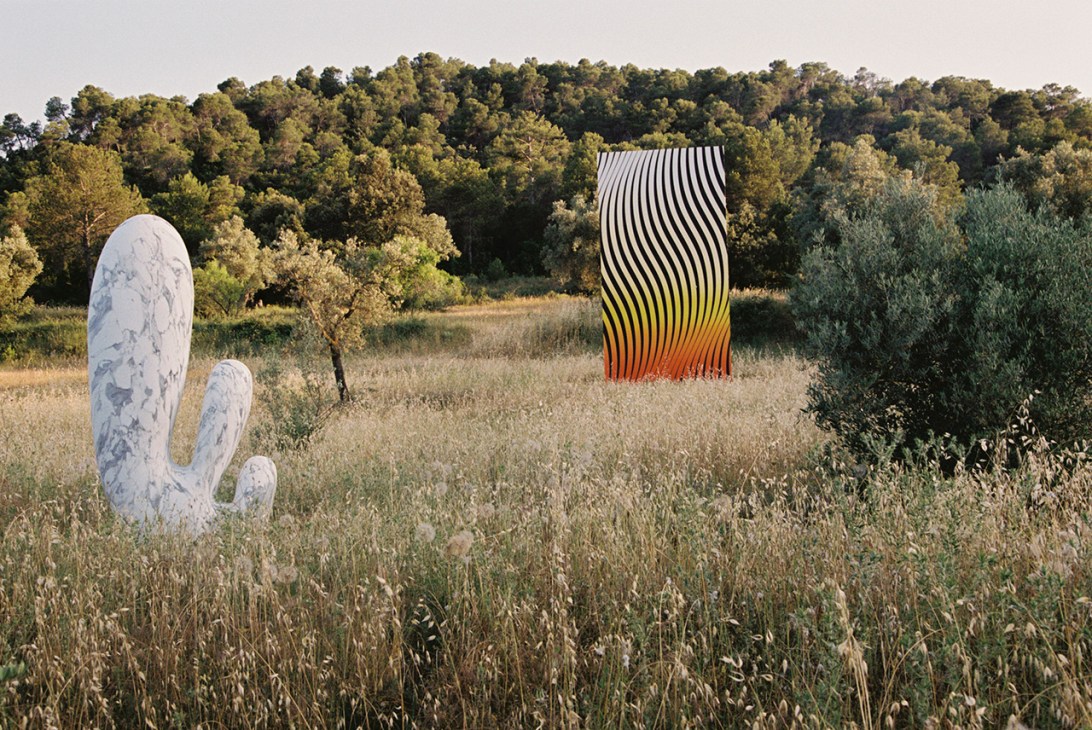
The walk leans into the wild side of the landscape and the path is marked only occasionally by wooden stakes, meaning that you often need to trust your intuition to find the way forward. This is all part of a minimal‑intervention approach that has preserved the pristine environment and helped to bring around many of the initially sceptical locals, as well as winning administrative approval for the next phase of the project. This will comprise a 25-pod eco-hotel that will include a permanent restaurant. The project is intended to round out Bourdais and Albarrán’s greater vision – the creation of a triptych of art, architecture and hospitality.
Standing on the site of the new hotel, which is earmarked to open in 2029, the view down into the valley can feel as though it has been plucked from the pages of a fantasy novel. The sandstone-coloured villages of Arnes and Horta de Sant Joan are draped across the rolling hills, while a volcanic-looking peak punctures the horizon. According to whispered local lore, the jagged mountain vistas inspired Picasso’s vision for cubism during a period in 1898 when he rested in the area while battling a stubborn respiratory illness.
A whole cast of other artists have followed in his footsteps, taking their cues from the untamed surroundings to slow down when it comes to their creative process. “The experience here is about cultivating a sense of openness,” says Bourdais. “It might sound ambitious but we want this vision to inspire other places around the world to reimagine the horizon.”
solo-houses.com
The old-school way of keeping the summer heat out of your home
On hot summer afternoons, Mediterranean cities go quiet. The streets are emptied by heat so intense that even the shadows seem to move slowly. The climate has inspired regional traditions such as the Spanish siesta, which is as much about respite from oppressive temperatures as it is about resting.
The same logic once informed architecture too, giving buildings cooling physical features including shutters that allow in light while keeping the heat out. Today, in our glass-sealed, climate-controlled structures, it’s easy to forget that both our daily rhythms and our architecture used to work with the weather, not against it. As the effects of climate change intensify, we need to reconsider more humble forms of temperature control. Here are five shutter designs that are well worth revisiting.
1.
‘Persiane alla genovese’, Italy
In the busy alleys of Genoa, the persiane alla genovese protect from the heat while also enhancing privacy. These shutters consist of louvred panels divided into two parts, which are opened in sequence: the bottom at dawn and the rest near dusk. The lower part is called gelosia (“jealousy” in Italian), a nod to the idea of protecting what’s inside from the gaze of the street. The shutters are painted green, making the streetscape look balanced and uniform. From inside, you can look out when either the top or bottom is open, while passersby on the exterior side see only a coherent landscape of green windows.
2.
‘Jalousies’, France
The French had a similar idea and came up with jalousie shutters. The name also comes from the word for “jealousy” but, unlike the Italian persiane, these shutters are more voyeuristic and have a greater focus on looking out without being seen. Those inside are able to peer through the gaps, with the slats deflecting any gaze from the street.
Jalousies first appeared in Marseille, where they were often painted white or in a sun-faded sage. Both were practical selections, with the white reflecting the sunlight and green hues hiding dust from the eye. By the 19th century, they appeared across Parisian façades too – more for atmosphere than climate control, but the soft light they create has become a symbol of romantic French interiors.


3.
Bahama shutters, Caribbean
Bahama shutters, also known as Bermuda shutters, developed in response to hurricanes in tropical climates. Designed to open and close vertically as opposed to horizontally, they are hinged from the top of the window and function more like fixed canopies, casting deep shadows while allowing the aperture to remain open through downpours, their angled slats deflecting rain and helping to control light and airflow. Once made from lightweight materials such as bamboo and palm fronds, today they come in more robust materials such as aluminium or wood.
4.
‘Muxrabija’, Malta
A timber box latticed with geometric patterns, the muxrabija was introduced to Malta during Arab rule in the ninth century. These structures, which protrude from buildings, were originally used as ventilation screens and tools to create a sense of privacy. Their dense geometric pattern reflects Islamic aesthetics and clever design, filtering sunlight and allowing those inside to observe the street without being seen. The muxrabija is typically carved from pine or cedar, while dark-green and brown colours help to blend with the shadows inside. This shutter doesn’t open or close but, in essence, forms a breathing façade that is fully integrated into the skin of the building.
5.
Stone screen, Greece
Before louvres and hinges, there were stones. In ancient Greece, from about 800 BCE to the Hellenistic period, there were either no windows or aperures were sealed with semi transluscent materials, such as thinly cut marble. The marble wasn’t adjustable but would let in light while blocking wind, dust or rain.
Today, we have replaced many traditional shutters with plastic shells and loud motors – but could we learn something from the simplicity of this ancient design? Perhaps there is an opportunity to revive the idea of slow, seasonal architecture with shutters that are put up as the climate demands and are made from materials that speak to the locale in which they are found.
Jose Gourmet’s canned fish delights both palate and eye
Few food and beverage packages reflect the feeling of sun and sea quite like the branding for fish conservas. Canned seafood has long been a headline act in summer lunches throughout the Mediterranean and on Europe’s Atlantic coast, used in everything from niçoise-style salads and bruschetta to pasta dishes. Capturing this sunny outlook is Portuguese brand Jose Gourmet, whose tins stand out on shelves across the globe – and not just because of the quality of the product within (which is outstanding).
With packaging made from grey card, brown paper and recycled materials, every can features artwork made in collaboration with designers, artists and illustrators. Alongside the simple typography is an eclectic variety of styles, some clear and colourful, others cartoonish or abstract – but all distinctive and personal. “It is gratifying to see how every illustration has become an object of appreciation, both as individual pieces and as a whole,” says Luís Mendonça, designer, partner and art director of Jose Gourmet. “They have become indispensable because of the differences between them.”

Mendonça founded Jose Gourmet with his friend Adriano Ribeiro in 2008. Early in their enterprise, the duo recognised the power of packaging to elevate their offering and invited 12 prominent Portuguese children’s illustrators to work with the brand, in an attempt to widen appreciation for canned goods. This list has now ballooned to almost 90 contributors and includes the founders’ friends, alongside students, established artists and designers who are at the very beginning of their careers.
For those involved, the commissions have become projects that connect them to Portuguese heritage through a community of local artists. “The brand stands out not only for the excellence of its ingredients but also for its bold and thoughtful design strategy,” says Marlene Couceiro, a graphic designer based in Porto who created the artwork for Jose Gourmet’s small sardines in tomato sauce.
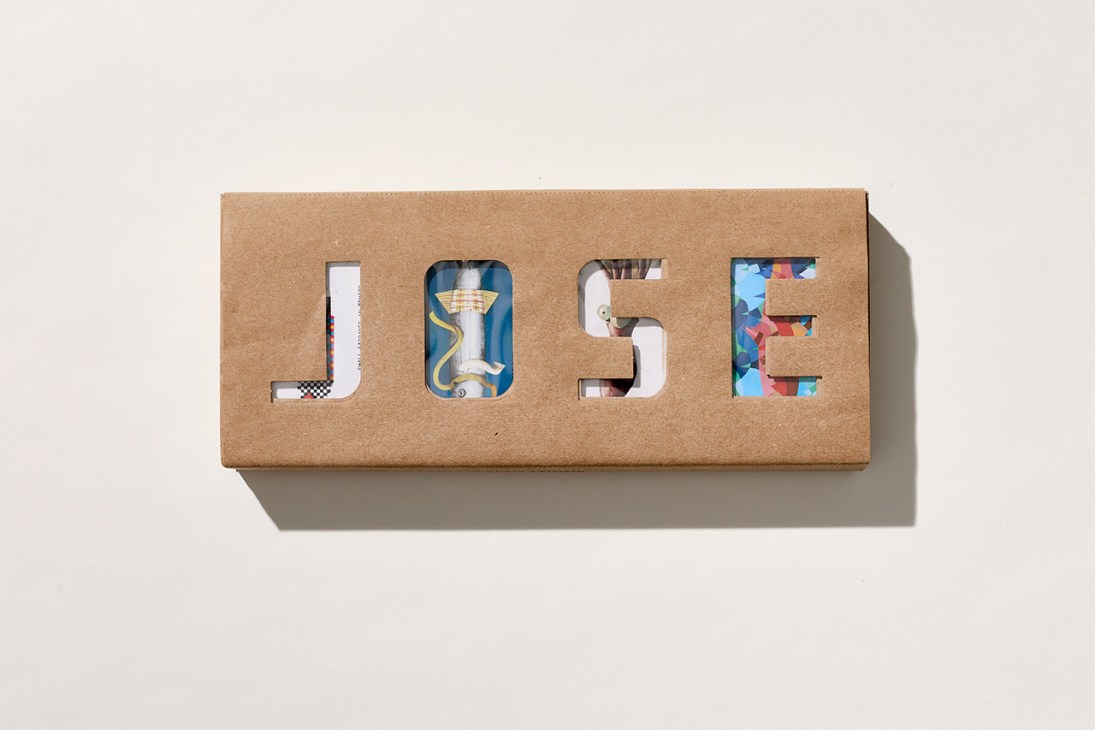
She saw the collaboration as a chance to share artistic space with a group of designers whose work she already admired. “The fact that Jose Gourmet chooses to collaborate with local artists, giving visibility to different voices and a range of styles, makes for a powerful gesture of cultural affirmation through design.”
The project is an imaginative, thoughtful way to build an authentic and personal brand identity, while championing local heritage. What more could you want from a can of tinned sardines in lemon and olive oil on a summer afternoon?
josegourmet.com
Meraki Studios, an intimate boutique hotel tucked in the mountains of central Crete
The beach or the mountains? That’s the outdoor enthusiast’s perennial holiday dilemma. This summer, however, a new development in one of Europe’s best-loved seaside destinations offers a surprising answer. A few years ago, a German-Austrian couple planning to relocate their family to Crete approached Sigurd Larsen, a Danish-born, Berlin-based architect. They showed him their land: a beautiful, semi-mountainous patch in the island’s central Rethymno region, near the village of Spili, which had been worked over the centuries into a series of small-scale, stone-walled agricultural terraces.
Ancient olive trees thrive here, alongside oak, fig, nut and fruit trees. The 6,500 sq m parcel had been cultivated by a man renowned for his knowledge of plants. “I was seduced by the landscape,” says Larsen, who has worked in and visited Greece extensively. “It looks like the Alps but with olives and Mediterranean vegetation.” The plot offers striking views and bountiful fruit and vegetables, and is only a short drive from some of Crete’s best southern beaches, such as Ligres and Triopetra.

Larsen agreed to create two sections on the plot: a cluster of six holiday units, as well as a nearby family house for the couple and their twins to live in. This summer, the first guests will be welcomed to these meticulously conceived buildings, called Meraki Studios (which can be loosely translated as “passion” but also means “doing something with love and care”).
To create a suite of rectilinear, almost cave-like buildings, Larsen and his team looked to the local environment for inspiration. Arranged over three levels, the Meraki apartments respond to Crete’s topography and its distinctive vegetation. The same materials that were used in the area’s ancient dry-stone walling feature heavily here; Larsen hopes that the lichen growing across the Rethymno region will also thrive on these new rocky surfaces in years to come.
Given Crete’s harsh sun and salty winds, any wood exposed to the elements needs to be exceptionally hard-wearing. In the past, Larsen resisted using African hardwoods in his European projects but the architect reasoned that this site’s location – far closer to Cairo than to Copenhagen – justified tropical timber. He also integrated Meraki’s numerous wooden-framed windows, sliding doors, pergolas, terraces and other outdoor niches into the buildings, hoping to enhance visitors’ enjoyment of open-air living.
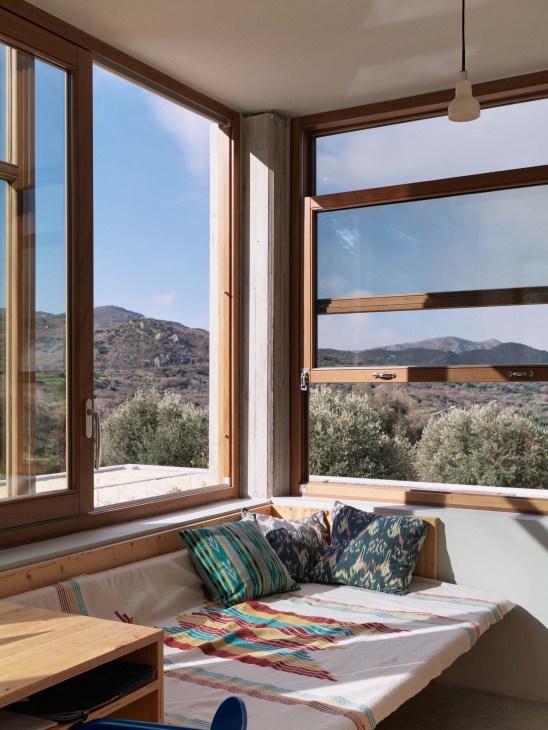

Thoughtful details help to distinguish each dwelling. “We tried to make all six apartments feel as though they’re the best one,” says Larsen with a smile. “When someone arrives, they will think, ‘Ah, I have a special feature in my one.’”
That distinctive character extends to what guests find inside. The architect paid careful attention to the placement of the beds so that visitors have access to stunning vistas at daybreak. “You wake up, you open the curtains and then you have this full, fantastic view.”
Danish traditions dictate that the designer of a building oversees the interior furnishings. So Larsen designed Meraki’s custom furniture, which was made on-site from Cretan cedar by a local carpenter. The architect, who specialises in this sort of architectural Gesamtkunstwerk, says that fitted furniture is an apt choice for these relatively compact dwellings because it allows designers of such properties to take advantage of every last centimetre of space.
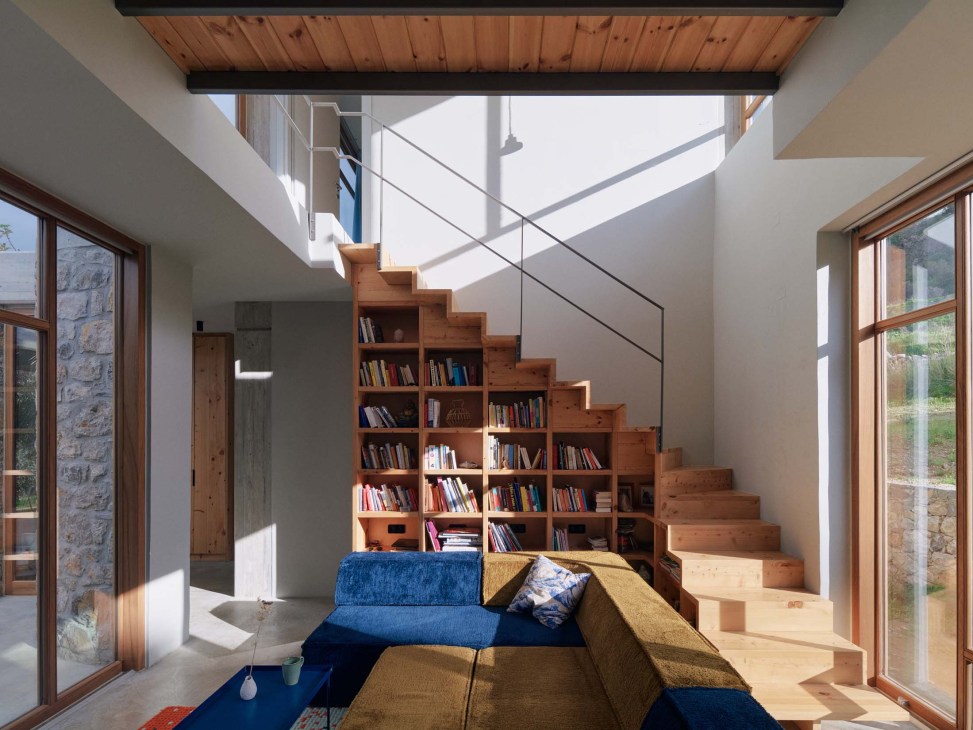
Some of the landscaping also fell under his purview. Meraki’s horticultural character has been softened a little to make it more garden-like, while still supplying the development with bountiful produce. At the plot’s far end, there is a medium-sized pool built among ancient stone walls. Larsen and his team have scattered deck chairs and sunloungers in carefully chosen spots. Some clusters offer privacy, others encourage guests to socialise and many afford views of the region’s spectacular sunsets.
Stroll around Meraki’s grounds and you’ll soon appreciate how well it functions as a hideaway. But it also suits anyone who is keen on views of nature and gastronomy. “Everyone says that Crete has the best food in Greece,” says the architect. “Every little tavern serves great dishes and here you can benefit from a fruit-and-vegetable garden.”
The place is unusual as it’s a Greek island holiday destination that’s within easy reach of – but not dedicated to – the sea. “It shows a new side of this landscape that I have come to appreciate,” says Larsen. The architect has considered all aspects of this terrain. Perhaps most significantly, he has made Meraki a porous place, where the distinction between interior and exterior melts away in the Mediterranean light.
“It’s not a hotel where you look out to the landscape,” he says. “It’s a place where inside and outside are melded together by lots of doors and openings, pergolas and terraces. That’s what people will remember about being here.”
merakistudios.gr
Four new openings for an outstanding summer on the Mediterranean
Food & Drink
La Bouillabaisse
Saint-Tropez
When you think of Saint-Tropez, the glitzy party hot spots along Pampelonne beach are what probably come to mind – Nikki Beach, say, with its lively pool area, bustling bar and pumping DJ sets. But to the west of southern France’s quintessential summer destination lies what many of the area’s residents consider to be the town’s real soul: the Plage de la Bouillabaisse. Once known as Saint-Tropez’s plage de la mode, the private beach was a favourite stamping ground of the 1960s jet set, with the likes of actress Jane Fonda and nouvelle vague filmmaker François Truffaut holidaying on its white sands.

La Bouillabaisse remains a go-to for many in this part of the world – among them Ludovic Moutet, who runs the laid-back, century-old club that gave this beach its name. “La Bouillabaisse brings together the people of Saint-Tropez, whether they own a villa in the surrounding hills or are just back here for their summer holidays,” he says. “These are the folks who loyally return every year to their table, parasol and sunbed. We’re far away from the DJ sets and champagne-fuelled celebrations that you find elsewhere in the area.”
When we join Moutet for a mid-morning coffee on the ocean-facing terrace, he is greeting a steady stream of evenly tanned beachgoers flocking to their chosen lounger for a day under the Mediterranean sun. “You come mainly to come back,” he says. The same holds true for the staff: many of them have worked here for years and know the regulars by name, as well as whether or not they take a slice of lemon in their sparkling water.
This summer, La Bouillabaisse reopens with a refreshed look, courtesy of Marseille- and Paris-based agency Mews, which has dreamt up a nostalgia-tinged décor complete with a seashell-inspired bar by Bella Hunt & ddc and custom-designed director’s chairs in the dining area.


“We were working in a territory between memory and reinvention,” says creative director Laëtitia Toulouse, whose team took a deep dive into the club’s archives for the redesign. “Our aim was to restore the venue’s deep-rooted identity, while anchoring it in the present – and looking ahead to its future too.” Of course, no beach club would be complete without a place in which to while away the hours and soak up some rays. As we enjoy the scene from the shade, sunseekers stretch out on the loungers lining the beach, while other guests retreat beneath the pastel-blue-and-white-striped parasols.
And because swimming and lounging are sure to work up an appetite, the food menu has been rethought, with Julien Sebbag serving up sunny, sharing-friendly specialities from across the Mediterranean. Think grilled aubergine croquettes, broccoli guacamole and stracciatella-drizzled confit red peppers. The self-taught chef is best known for his meat-free options, having made a name for himself with the all-veggie Créatures on the rooftop of Paris’s Galeries Lafayette, as well as picking up plaudits for his omelette-filled challahs at
his first-arrondissement sandwich spot, Micho.

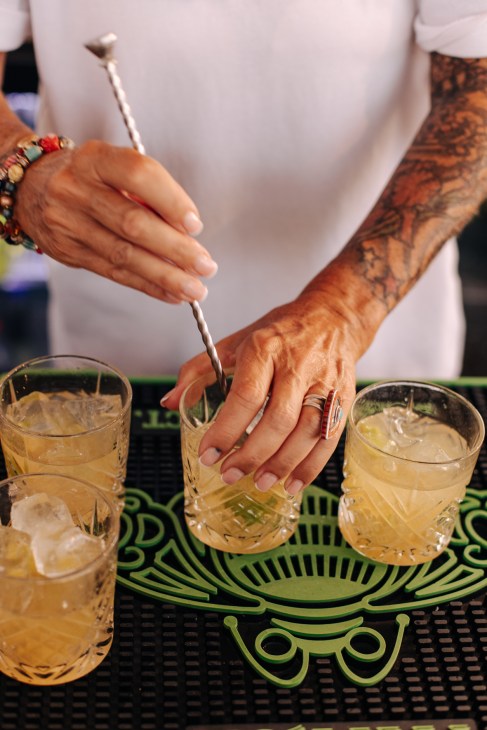
Here he has integrated his vegetable-focused menu with a range of seafood classics, such as fried sardines and sole meunière. It’s a nod to La Bouillabaisse’s origins as a restaurant in the early 1900s, long before it welcomed beachgoers with the addition of cabine de bains in 1932. Back then, the spot churned out grilled fish, langoustines and, yes, bouillabaisse for hungry holidaymakers and local fishermen alike. Today, La Bouillabaisse is a place to soak up the ambience of the coast: the only soundtrack playing is the clinking of cutlery and the gentle roll of the waves.
labouillabaisseplage.fr
Food & Drink
Oli Bar
Cadaqués
When Catalan chef Vito Oliva opened Talla in 2012, the people of Cadaqués – a town about an hour and a half by car from the southern French city of Perpignan and two hours from Barcelona – didn’t immediately take to his food. “Back then, the area was just beginning to transform,” he tells Monocle. The rugged fishing town was once a haunt of Salvador Dalí and frequented by Pablo Picasso and Joan Miró. It was a place where people were more accustomed to eating the aquatic bounty found along the town’s rocky promontory.
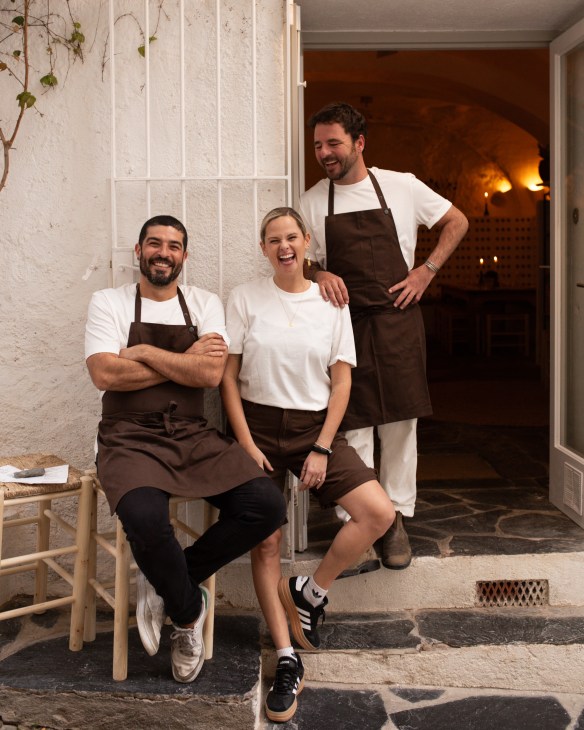
Now Oliva has opened Oli Bar with Italian marketing professional Valentina Audisio and Catalan chef Monty Aguiló, who hatched their plan after meeting in London while working for the hospitality group of Extremaduran chef-restaurateur José Pizarro. Oliva and Aguiló had worked in Spain, Germany and Australia over the previous two decades before they cooked up the idea for Talla in Cadaqués.
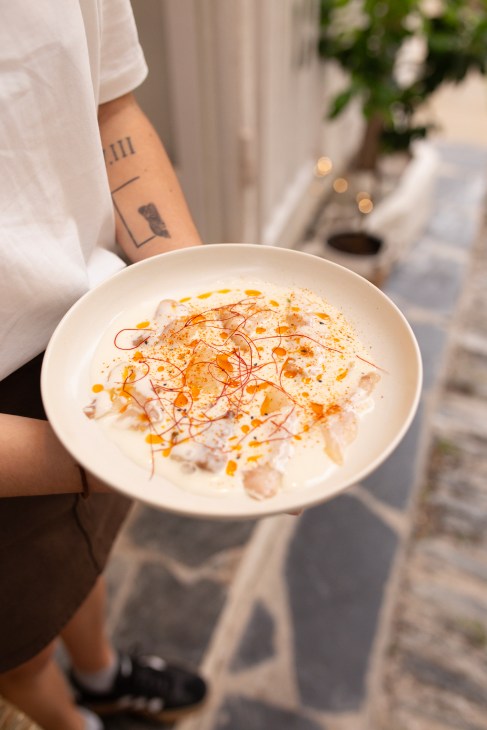

Oli Bar operates from inside a converted oil mill. It serves British-inspired platillos including scotch eggs and Guinness cake, as well as dishes such as Basque-style seabass and game tartare with Mallorcan sobrasada sausage.
The wine list is equally eclectic. Drinkers can choose a carafe of Galician albariño, German riesling or a Piedmontese nebbiolo. And instead of Catalan pa amb tomàquet, at Oli Bar you’ll find fresh house focaccia studded with black olives and slathered in irresistible smoked butter from Barcelona-based dairy Rooftop Smokehouse.
“When we lived in London, we used to love sitting at the counter at a Thai restaurant there
called Kiln,” says Audisio. That’s why the stainless-steel bar that encircles an open kitchen is the heart of the dining room.
olibarcadaques.com
Food & Drink
Radical Farmhouse
Liguria
Take a short drive uphill from the pebble beach at Lavagna in Italy’s Liguria region and you’ll soon find yourself in another world. From the gates of Radical Farmhouse, a path winds towards a red stucco villa, in front of which stand tables shaded by a pergola and a canopy of olive trees. From here stretches a smallholding where everything from cherry trees, beans and artichokes to wild strawberries and fragrant herbs is grown.
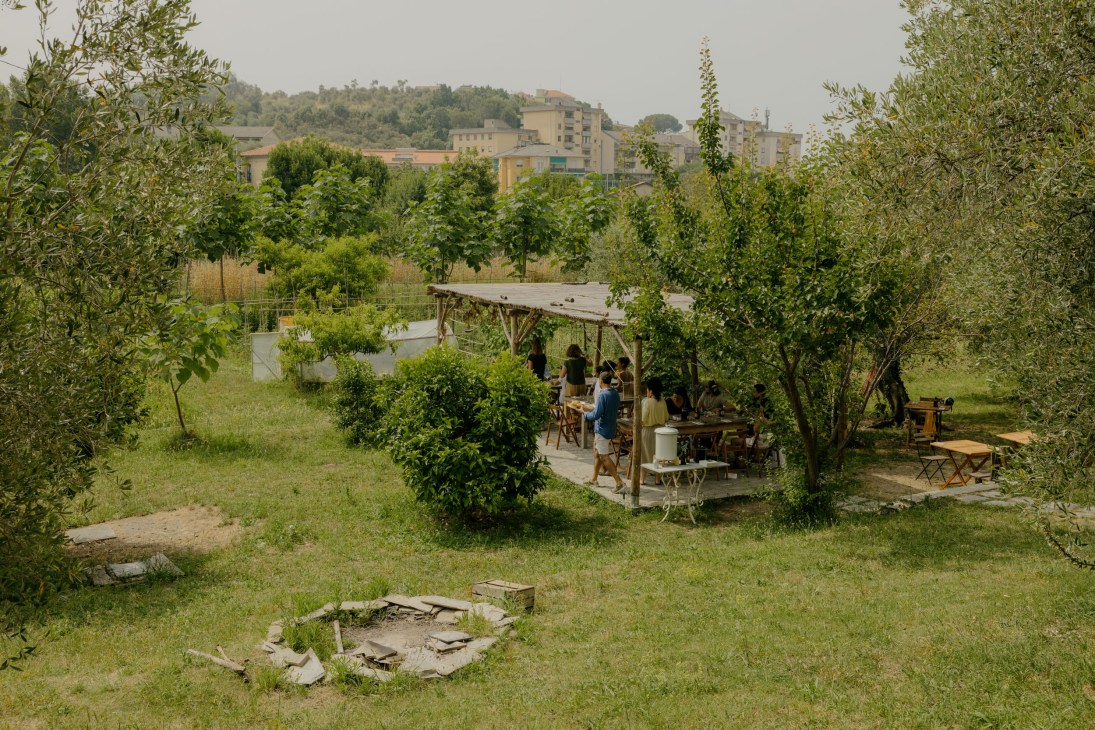
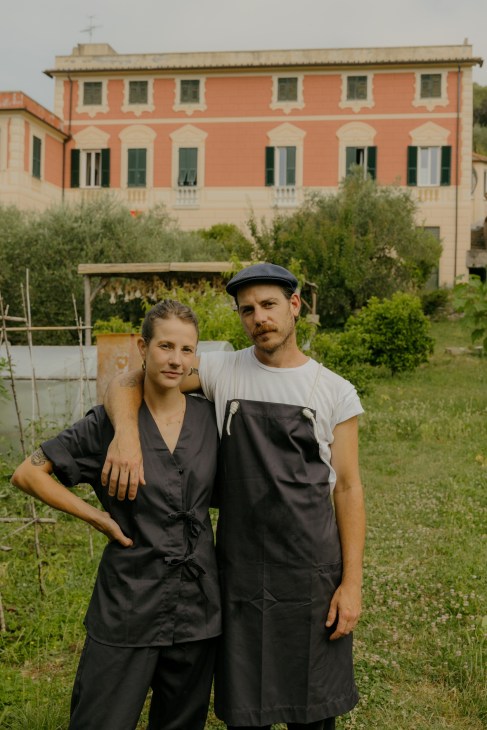
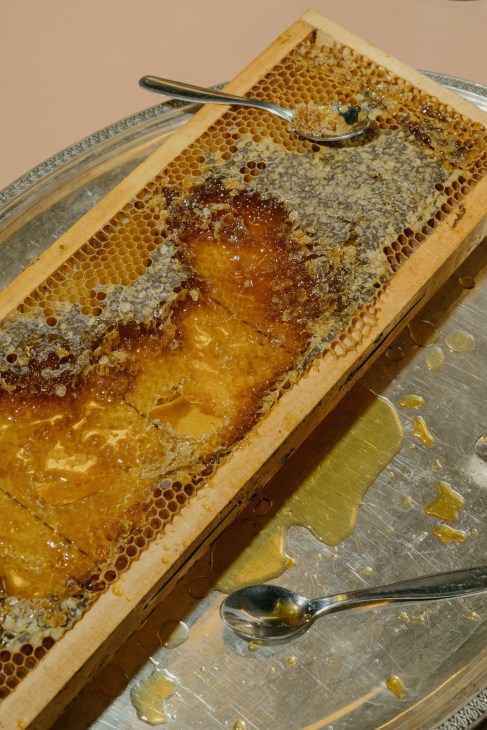
Radical Farmhouse is the new project from Caterina Ravano, who hails from Lugano in Switzerland, and her partner, Segundo Achinelli, from Buenos Aires. “There was a gap in the market,” says Ravano, who launched the business in April. Its farm kitchen is fully vegetarian and sources ingredients almost entirely from the surrounding land. “There weren’t many places like this in Liguria. Our central message is the value of relatively simple food, sharing and understanding the land.”
The pair are taking their fledgling farm business step by step as its popularity spreads through word of mouth. There are plans to add accommodation at some point but, for now, olive trees must be pruned and weekend guests be taken care of. “People come here to be outside and in the garden,” says Ravano. “That’s the character of the place.”
radicalfarm.bio
Hospitality
Hotel Corazón
Mallorca
Mallorca’s 15-room Hotel Corazón sits on the brow of the rocky Tramuntana, beside a wiggly road that courses down to the hippy- and-rich village of Deià. It is now welcoming guests for its third season, under the watchful eyes of co-owners Kate Bellm and Edgar Lopez. The former is a fashion photographer who has shot for publications such as Vogue (think siren-like naked women swimming in the ocean). She and Lopez clearly know how to
pull a cool crowd. Their house on the hill does away with any primness or need to be on your best behaviour. Instead, it’s a fun spot where models, musicians and other creatives come to holiday.
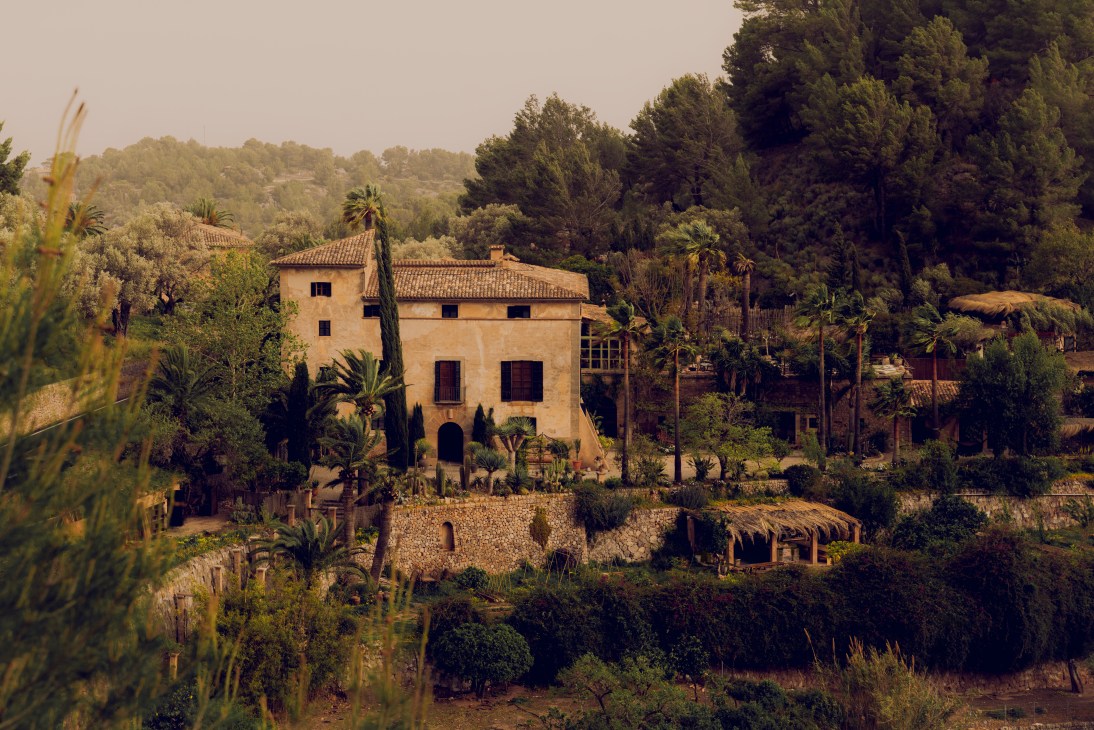


For this summer, the duo have redesigned their dining spaces, including the sunny terrace, with the help of London-based designer and Ballearic regular Tatjana von Stein. Gone are the traditional wooden chairs; in their place are cocooning, circular benches and red-marble tables made by a local stone mason.
The food is also a big draw. The hotel’s head chef, Eliza Parchanska, makes good use of produce grown by the farmer in residence, Emma Galea. It’s a partnership that results in bowls of flavoursome salads, dishes strewn with edible flowers and a cheese brioche that will linger in your dreams for days.
hotelcorazon.com


